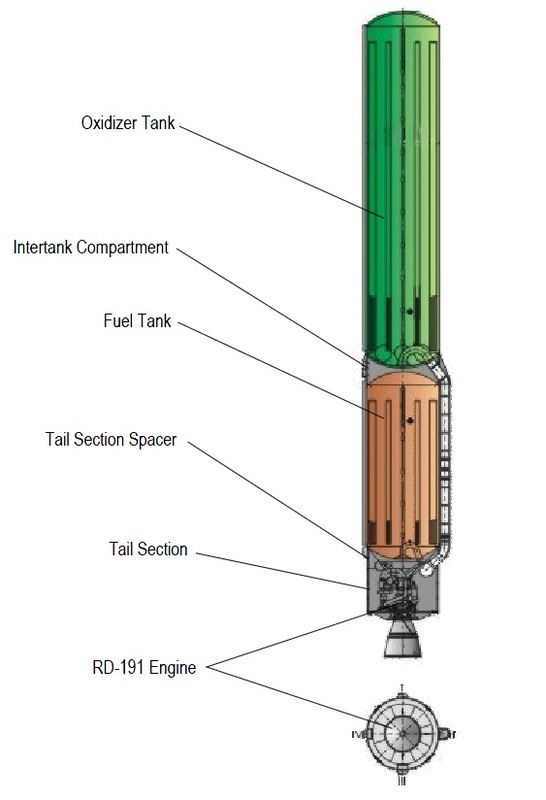Featured image credit: Russian Ministry of Defense
Lift Off Time | October 14 2022 20:00:00 UTC | 23:00:00 MSK |
|---|---|
Mission Name | EMKA-3 / Kosmos-2560 |
Launch Provider | Khrunichev State Research and Production Space Center |
Customer | Russian Ministry of Defense |
Rocket | Angara 1.2 |
Launch Location | Site 35, Plesetsk Cosmodrome, Arkhangelsk Oblast, Russia |
Payload mass | ~150 kg |
Where is/are the satellite(s) going? | Sun-Synchronous Orbit (SSO) ~300 km altitude, ~96.5° inclination |
Will they be attempting to recover the first stage? | No, this is not a capability of Angara |
Where will the first stage land? | It will crash into the Barents Sea |
Will they be attempting to recover the fairings? | No, this is not a capability of Angara |
Are these fairings new? | Yes |
How’s the weather looking? | N/A |
This will be the: | – 2nd orbital launch of Angara 1.2 – 6th launch of any Angara vehicle – 9th orbital launch from Plesetsk Cosmodrome in 2022 – 139th orbital launch attempt for 2022 |
Where to watch | If an official livestream is available, we will post a link here |
What Does All This Mean?
Russia is launching a small military satellite, known as EMKA-3, to a Sun-Synchronous Orbit onboard the second orbital launch of an Angara 1.2 rocket.
EMKA-3 Satellite
Not much is known about this payload, due to its military and secret purpose. The EMKA series of satellites are thought to be optical reconnaissance spacecraft. The first EMKA satellite, designated as Kosmos 2525, launched on a Soyuz 2-1v rocket back in March 2018.
The second satellite in the series, known as Kosmos 2551, reached orbit successfully, but apparently showed no signs of life after this. It is thought to have fallen out of orbit in October 2021.
A third EMKA satellite, known as Kosmos 2555, was launched on the inaugural orbital flight of Angara 1.2, in April 2022. This vehicle appeared to have no operational function after separating from its payload adapter, and fell out of orbit in May 2022.
It is unclear whether this satellite, EMKA-3, is a replacement for the failed Kosmos 2555 satellite, or whether Kosmos 2555 was merely a dummy mass payload.
If this launch is successful, the EMKA-3 satellite is expected to be designated as Kosmos 2560.
Angara 1.2 Rocket
The Angara rocket family was created in 1992 and is an entirely Russian launch vehicle. Previous Russian launch vehicles have used parts or equipment from other former Soviet Union countries. Angara is designed to replace the venerable Proton vehicle.
The smallest member of the family, Angara 1, was designed to have a single core booster with no side boosters. This applies to both the original Angara 1.1 (which was canceled) and the newer Angara 1.2.
Other versions of Angara have been proposed and one of them has flown at least once. The Angara 3 version would have had two side boosters, and Angara 5 has four side boosters.

Angara 1.2 consists of:
- a core booster stage
- a second stage modified from the Soyuz 2 third stage
- an optional Briz-KM upper stage
- payload fairing (based on the one used on Rokot)
First / Core Stage – Universal Rocket Module
The Universal Rocket Module (URM) is used as the core stage on each version of Angara. On Angara 5, it is also used to provide the side boosters.
| Length | 25.695 m |
| Diameter | 2.90 m |
| Fuel | Kerosene (RP-1) |
| Oxidizer | Liquid Oxygen |
| Launch Mass | 137,800 kg |
| Engine | RD-191 |
| Cycle Type | Oxygen-Rich Staged Combustion |
| Specific Impulse (Sea Level) | 311.4 s |
| Specific Impulse (Vacuum) | 337.5 s |
| Burn time | 240 s |

The RD-191 is a single-chamber version of the RD-171 used on the Zenit rocket. This was in turn based on the RD-170 engine designed for Energia. The RD-191 can throttle down extremely far, as low as 27% of its rated performance. During launch, however, it is usually throttled no lower than 30%.
The RD-191 uses the oxygen-rich staged combustion cycle. This means that all of the oxygen is directed into the LOX impeller turbopump before arriving at the preburner. The LOX turbopump and both fuel pumps are all mounted on a single shaft. The fuel that comes out of the fuel pumps is used for regenerative cooling of the engine.
Second stage – Modified Block 1
The second stage that is used on the Angara 1.2 is a modified Block 1 based on the upper stage from the Soyuz 2 vehicle.
| Length | 6.74 m |
| Diameter | 2.66 m |
| Fuel | Kerosene (RP-1) |
| Oxidizer | Liquid Oxygen |
| Launch Mass | 27,755 kg |
| Engine | RD-0124A |
| Cycle Type | Staged Combustion, Closed Cycle |
| Specific Impulse (Vacuum) | 359 s |
| Burn time | 300 s |

Optional Upper Stage (Briz-KM)
When Angara was originally being designed, there was an option of using a Briz-KM upper stage. However recent documents do not continue to include this module. If used, Briz-KM would be capable of helping Angara 1.2 achieve high-energy trajectories for low payload masses.
In order to launch with this upper stage with a launch mass of 6,300 kg, both first and second stages would need to be loaded with less propellant on board in order to keep the total launch mass down.
Payload Fairing
There are two versions of the fairing available for Angara 1.2, both of which are based on the ones used on the Rokot vehicle.
| Fairing | Fairing 1 (Rokot) | Fairing 2 (Adv. Rokot) |
| Length | 7.8 m | 9.88 m |
| Diameter | 2.5 x 2.62 m | 3.0 m |
| Mass | ~500 kg | 810 kg |
| Structure | – Honeycomb Aluminum Core – Graphite enforced Face sheets | Two half-shell carbon-fiber reinforced Plastic |
The two halves of the standard payload fairing have an elliptical shape that is 2.5 by 2.62 m when assembled. The usable payload volume is 5.9 tall.





